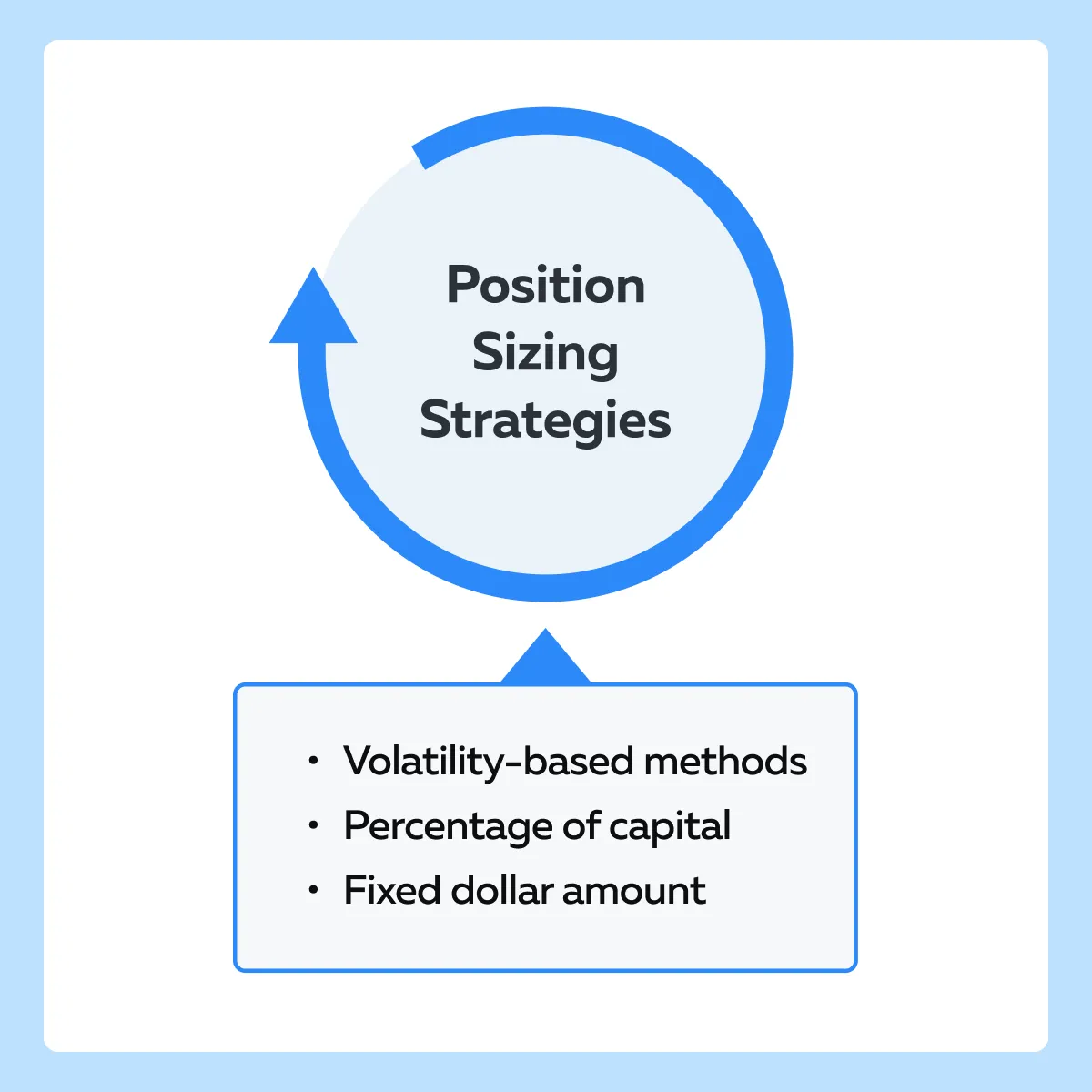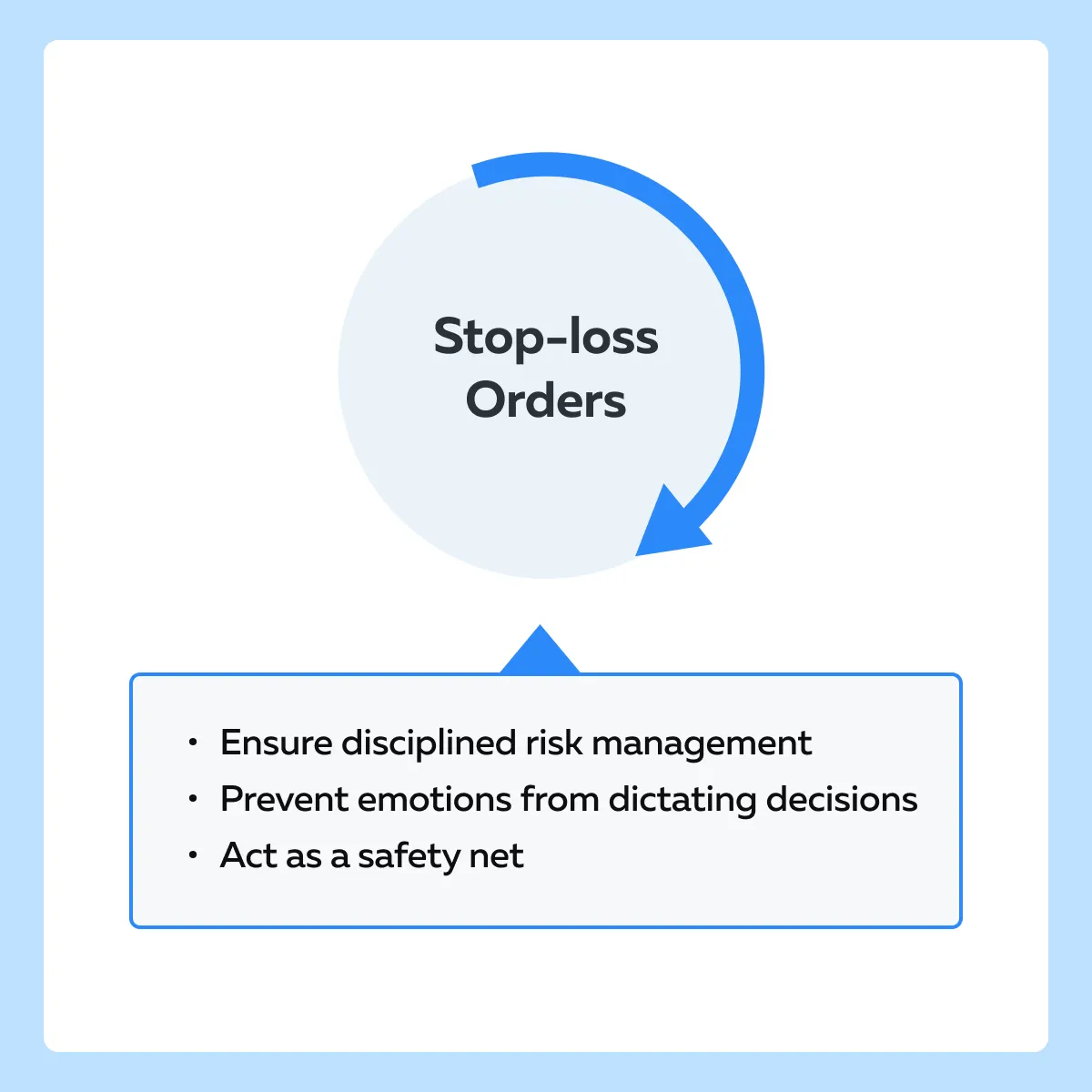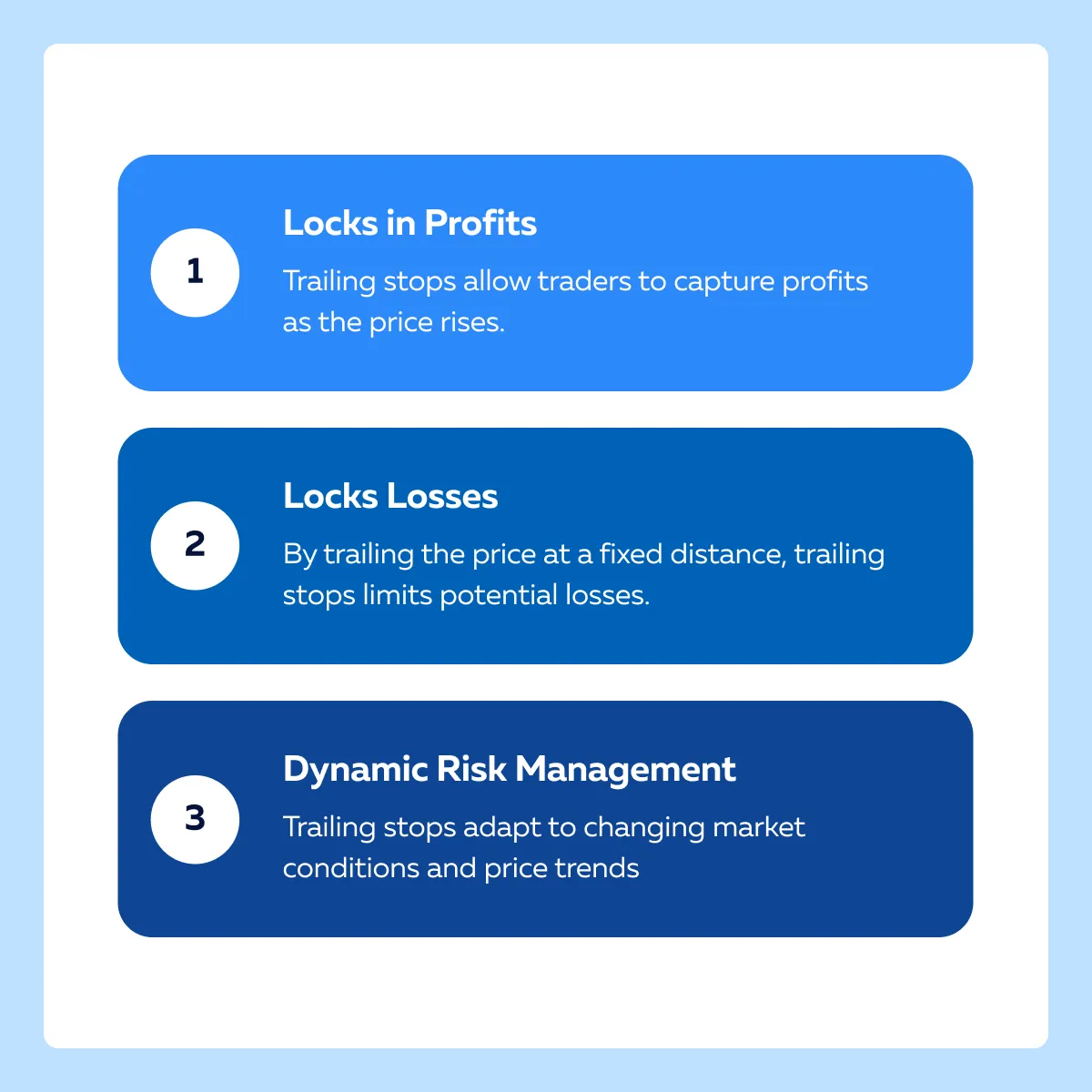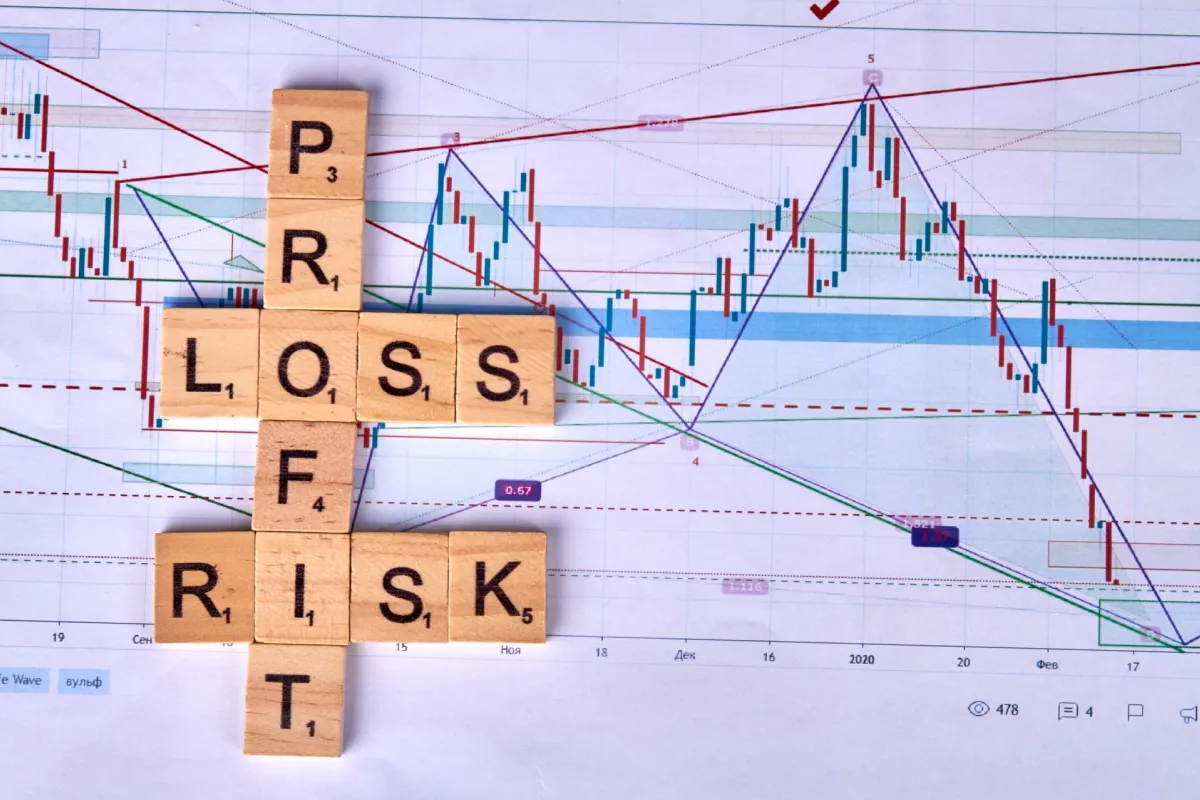

December Trading
Deals Are Live!
Save on Global+, data access,
and add-ons.
See All December Deals

Black Friday
Nov 28-Dec 31
16 days : 14 hours
50% OFF Global+ Quarterly
+ 50% OFF Data (3 months)

Cyber Monday
Dec 1 - Dec 31
16 days : 14 hours
60% OFF Global+ Monthly
+ Data (1 month)

Add-on Deals
Dec 1 - Dec 31
16 days : 14 hours
50% OFF
Add-ons

New Year Sale
Dec 26 - Jan 1
10 days : 14 hours
30% OFF Global+ Lifetime
*Data not included
Education
July 18, 2024
SHARE
How to Safeguard Your Profits: Risk Management in Swing Trading
It’s risky; yet profitable. This is a popular adage for swing trading, which is practiced by millions of traders across the world. However, only a handful are successful. Estimates state that only around 10% of swing traders achieve profitability.
But why so? Is it due to poor risk management?
In this article, we’ll share some essential concepts and techniques that swing traders should understand to better their trading outcomes. Firstly, we will study how to perform risk management in swing trading and then highlight certain significant psychological aspects.
Next, we will examine some common position sizing strategies, such as fixed dollar amount, percentage of capital, and volatility-based methods. Through practical examples and insights into the pros and cons of each approach, we will tell you how you, as a swing trader, can make informed trading decisions.
Also, we will discuss the critical role of stop-loss orders in managing risk and protecting against adverse market movements. Let’s begin.
Risk Management in Swing Trading
Risk management is the foundation of successful swing trading. It involves strategies and methodologies aimed at limiting anticipated losses while maximizing gains. Without it, traders carry a high risk of losing their entire investment in financial markets. Ideally, the focus of traders should not only be on finding lucrative opportunities but also on:
- Capital protection and
- Avoid taking unnecessary risks.
While sailing in choppy waters, think of risk management as your life jacket. It keeps you afloat when unexpected waves hit and ensures you reach your destination safely.
Some Key Psychological Aspects to Know
Suppose, you’ve just entered a trade, and suddenly the market takes a turn against you. Panic sets in. Should you cut your losses or hold on? Is it wise to hope for a rebound? This is where discipline comes into play. A well-defined risk management plan helps you make rational decisions even in the face of adversity.
Furthermore, emotional control is equally crucial. Fear and greed may easily dictate your actions, especially when money is on the line. However, successful traders:
- Exercise emotional restraint,
- Stick to their predefined risk parameters, and
- Avoid impulsive moves.
Let’s understand the importance of risk management using two hypothetical examples:
Example 1: The Greed Trap
The Backdrop
- Suppose, a trader named Michael is exploring swing trading opportunities.
- He found a popular tech company that was about to release its earnings report.
- He entered a long position and bought 150 shares at $140 per share in the early trading session
- He anticipated positive earnings results following the company’s strong performance in the previous quarters.
- As the day progressed, the stock price continued to climb and reached at a high of $160 per share at 1 PM.
The Greed
- Despite seeing substantial profits, Michael’s greed got the better of him, and he decided to hold onto his position, hoping for even higher gains.
- Michael ignored:
- His risk management plan and
- The potential for market volatility surrounding the earnings report.
The Event
-
- The company released its earnings report at 2 PM, just 2 hours before the close of trading.
- The results were abysmal and did not surpass analysts’ expectations.
- As a result, the stock price started plunging and dropped from its high of $160 to $145 within minutes of the earnings release.
- Michael ignored setting a stop-loss order as he was overconfident.
- By the end of the trading session at 4 PM, the price plummeted to $115.
The Guilt
- At 1 PM, Michael could have realized a gain of $3,000 [150 shares x ($160 – $140)].
- However, out of greed, he held onto his position.
- By the end of the trading day, he sat at an unrealized loss of $3,750 [150 shares x ($160 – $140)]
The Lesson
- What started as a profitable trade quickly turned into a significant setback.
- This example shows the dangers of:
- Ignoring risk management principles and
- Succumbing to greed in trading.
- Had Michael followed his predefined exit strategy and locked in profits when appropriate, he could have avoided the losses.
Example 2: The Tale of Two Traders
| Trader A | Trader B |
|
|
Position Sizing Strategies
Position sizing determines the amount of capital allocated to each trade. There are three commonly used position-sizing strategies:

Let’s understand their practical applications along with their respective pros and cons:
1. Fixed Dollar Amount
In this approach, traders allocate a predetermined fixed dollar amount to each trade, regardless of account size or market conditions. Let’s say, a trader decided to risk $500 on every trade.
Practical Example
- Trader X has a $10,000 trading account.
- They decide to risk $200 per trade, representing 2% of their capital.
- If they’re trading a stock priced at $50 per share, they’ll buy 4 shares ($200 / $50 = 4 shares).
| Pros | Cons |
| This strategy is simple and easy to implement. | It doesn’t account for variations in:
|
| It provides consistency in risk exposure across trades | It can lead to:
|
| It limits potential losses, especially for smaller accounts. |
2. Percentage of Capital
This strategy involves risking a certain percentage of the trading account capital on each trade. Let’s say, a trader may choose to risk 2% of their account on every trade.
Practical Example
- Trader Y has a $20,000 trading account.
- They decide to risk 2% on each trade.
- With a stock priced at $100 per share, they’ll risk $400 ($20,000 * 2% = $400) on the trade.
- If they’re willing to tolerate a maximum loss of $2 per share, they’ll buy 2 shares ($400 / $2 = 2 shares).
| Pros | Cons |
| This method adjusts position size according to account size and maintains proportional risk. | It may lead to larger position sizes in high-volatility markets which can increase risk exposure. |
| It provides flexibility to adapt to changing market conditions. | It requires periodic adjustment as account size fluctuates. |
| It helps prevent overtrading or under-trading based on account size. |
3. Volatility-Based Methods
These methods consider the volatility of the asset being traded by adjusting position size based on its price fluctuations. There are two common approaches:
- The Average True Range (ATR) Method and
- The Volatility Quotient Method.
Read the table below to understand them in detail:
| Method | Meaning | Calculation | Application |
| Average True Range (ATR) Method |
|
|
|
| Volatility Quotient Method |
|
|
|
Setting Stop-Loss Levels
Stop-loss orders serve as a safeguard against unexpected market movements. These orders reflect predefined price levels at which traders exit a trade to limit losses.

How to Determine Optimal Stop-Loss Levels?
Let’s study some popular methods to determine optimal stop-loss levels:
- Method I: Technical Analysis
- Employ technical indicators and chart patterns to recognize key support and resistance levels.
- Place stop-loss orders just:
- Below support levels for long positions and
- Above resistance levels for short positions.
- Additionally, confirm your stop-loss placement using:
- Moving averages,
- Trendlines, and
- Oscillators.
- Method II: Market Volatility
- Factor in market volatility when setting stop-loss levels.
- Volatile markets require wider stop-loss orders to account for price fluctuations, while calmer markets require tighter stop-loss levels.
- Utilize volatility indicators, such as Average True Range (ATR) to adjust stop-loss distances accordingly.
- Method III: Risk-Reward Ratio
- Calculate the risk-reward ratio for each trade.
- This calculation ensures that potential profits outweigh potential losses.
- Adjust stop-loss levels to maintain a favorable risk-reward ratio.
- Aim for a ratio of at least 1:2 or higher.
How to Adjust Stop-Loss Levels?
As trades progress, it’s essential to monitor price movements and adjust stop-loss levels accordingly. Let’s see how you can make the necessary adjustments:
-
- Trail Stop-Loss Orders
- Implement trailing stop-loss orders to lock in profits as the trade moves in your favor.
- These orders follow the price at a predetermined distance.
- Trail Stop-Loss Orders
- Break Even Stop-Loss
-
-
- Once a trade has generated a certain amount of profit, consider adjusting the stop-loss level.
-
- Adjust it to breakeven or slightly above the breakeven.
-
-
- This adjustment eliminates the risk of a losing trade turning into a loss and ensures that even if the trade reverses, you exit without incurring a loss.
-
- Reassess Based on New Information
-
- Regularly reassess relevant:
- Market conditions,
- News events, and
- Technical developments.
- Adjust stop-loss levels accordingly to adapt to changing circumstances and protect capital.
- Regularly reassess relevant:
Trailing Stops
Trailing stops enable traders to:
- Protect profits and
- Limit losses.
Let’s explore the concept in detail:
What are Trailing Stops?
Trailing stops are stop-loss orders. These orders automatically adjust as the price moves in the trader’s favor. Instead of setting a fixed price level, trailing stops maintain a predetermined distance from the current market price, “trailing” behind it as it moves:
- Upward (for long positions) or
- Downward (for short positions).
How Effective are Trailing Stops in Swing Trading?

What are Different Trailing Stop Techniques?
| Percentage-Based Trailing Stops | Volatility-Based Trailing Stops | Indicator-Based Trailing Stops |
| In this approach, traders set the trailing stop distance as a percentage of the current market price.
For example, a trader sets a trailing stop at 10% below the highest price reached since entering the trade. |
Volatility-based trailing stops adjust the stop distance based on market volatility. This approach determines the appropriate trailing stop level by considering factors, such as:
|
Traders set trailing stops using technical indicators, such as:
For instance, a trader might use a moving average crossover as a signal to adjust the trailing stop level. |
Some Hypothetical Case Studies
Case Study 1
- Trader A enters a long position on a stock at $50 per share.
- They set a trailing stop of 10% below the highest price reached since entering the trade.
- As the stock price rises to $60, the trailing stop adjusts to $54.
- If the price subsequently drops to $55, the trailing stop remains at $54, locking in a profit of $4 per share.
Case Study 2:
- Trader B uses volatility-based trailing stops based on the Average True Range (ATR) indicator.
- They enter a trade with a trailing stop set at 1.5 times the 14-day ATR.
- The trailing stop widens as the market becomes more volatile.
- In this way, trader B gets greater protection against sudden price fluctuations.
Managing Risk-Reward Ratios
Maintaining favorable risk-reward ratios forms the foundation for consistent profitability. It guarantees that potential profits exceed potential losses. By consistently targeting trades with attractive risk-reward profiles, traders can tilt the odds in their favor and achieve long-term success in swing trading.
Most traders face difficulties in calculating risk-reward ratios. Let’s understand the computation in four simple steps:
| Step I | Step II | Step III | Step IV |
| Determine Entry and Exit Points | Set Stop-Loss Level | Calculate Risk and Reward | Determine Risk-Reward Ratio |
|
|
|
|
How to Assess Risk-Reward Ratios?
For a precise assessment, traders must consider the following factors:
- Market Conditions
-
-
- Evaluate the current market environment, in terms of:
- Volatility
- Trend direction, and
- Key support/resistance levels
- Favor trades with risk-reward ratios that align with prevailing market conditions.
- Evaluate the current market environment, in terms of:
-
- Trade Setups
-
-
- Look for trade setups that offer clear entry and exit points with well-defined stop-loss levels and target prices
- Avoid trades with:
- Poor risk-reward ratios or
- Unclear price action signals.
-
- Probability of Success
-
- Assess the probability of the trade reaching the target price versus hitting the stop-loss.
- Perform this assessment by using:
- Historical price data,
- Technical indicators, and
- Market sentiment.
- Aim for trades with a high probability of success and a favorable risk-reward ratio.
Tips to Optimize Risk-Reward Profiles
- Prioritize trades with risk-reward ratios of 2:1 or higher.
- Look for trade setups with:
- Clear trends,
- Strong support/resistance levels, and
- Favorable entry points.
- Avoid chasing trades with unfavorable risk-reward ratios.
- Keep adjusting risk-reward ratios as the trade progresses.
- Regularly review and analyze trade outcomes.
- Keep refining your approach and identifying opportunities for improvement.
How to Implement Effective Risk Management Strategies?
Risk management strategies help swing traders to:
- Protect capital and
- Achieve consistent profitability
Let’s study some actionable tips to implement these strategies effectively:
| Tips | Explanation |
| Define Your Risk Tolerance |
|
| Set Clear Trading Rules |
|
| Limit Risk Exposure |
|
| Utilize Stop-Loss Orders: |
|
| Diversify Your Trades |
|
| Practice Position Sizing |
|
Some Practical Examples
Example 1
- Trader X follows a strict risk management strategy.
- They risk no more than 1% of their trading account capital on any single trade.
- They adhere to predefined stop-loss levels based on technical analysis and adjust their position size accordingly.
- Despite experiencing occasional losses, Trader X’s disciplined approach helps them:
- Preserve capital and
- Achieve consistent profitability over the long term.
Example 2
- Trader Y diversifies its trades across different sectors and asset classes to spread risk.
- They manage risks using strategies, such as:
- Stop-loss orders and
- Position sizing.
- They stick to their predefined trading rules and maintain discipline.
- Trader Y successfully navigates volatile market conditions and achieves steady returns.
Conclusion
In swing trading, managing risk is crucial for success. It helps protect capital and achieve consistent profits. By defining risk tolerance and setting clear trading rules, traders can avoid emotional decision-making and maintain discipline.
Also, traders must limit their risk exposure by diversifying trades, using stop-loss orders, and effectively position sizing. Throughout their trading journey, traders must maintain consistency and adhere to their predefined trading rules.
Are you prepared to take your swing trading to the next level? Explore more swing trading strategies in our comprehensive guide. Click here to read.
